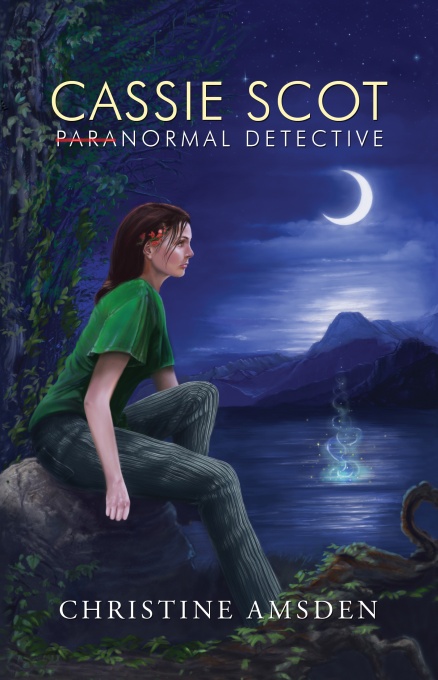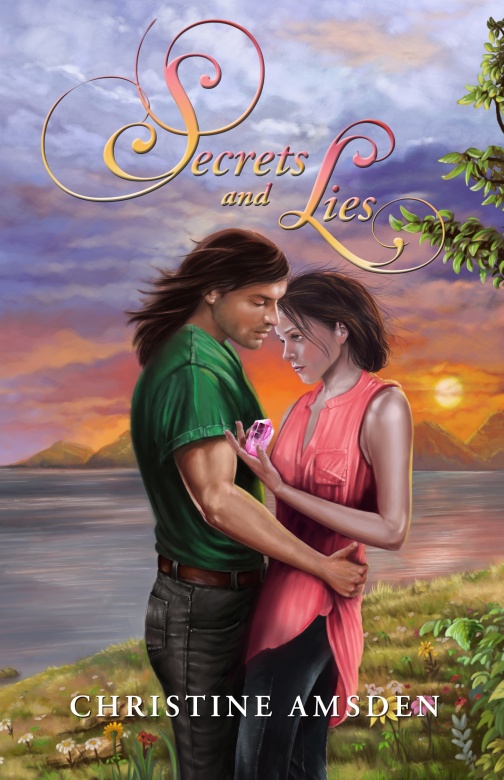 For someone who doesn’t consider herself to be a young adult fiction writer, I have spent a lot of time in recent months thinking about what young adult means and how to define it as a genre. The reason is simple: Quite a few of my readers are calling Cassie Scot YA. Even my publisher has been classifying the series that way, making me wonder if I should just give in to the pressure and go with the label. I might have done so, except not everyone agrees, and in fact at least one reviewer knocked a star off of her rating because she felt the book was being misclassified as young adult. I couldn’t agree with her more. And she’s not alone, either. Whether people are saying it’s just plain misclassified, or has broad adult appeal, or is really new adult, the one thing I’m sure about is that there’s no consensus.
For someone who doesn’t consider herself to be a young adult fiction writer, I have spent a lot of time in recent months thinking about what young adult means and how to define it as a genre. The reason is simple: Quite a few of my readers are calling Cassie Scot YA. Even my publisher has been classifying the series that way, making me wonder if I should just give in to the pressure and go with the label. I might have done so, except not everyone agrees, and in fact at least one reviewer knocked a star off of her rating because she felt the book was being misclassified as young adult. I couldn’t agree with her more. And she’s not alone, either. Whether people are saying it’s just plain misclassified, or has broad adult appeal, or is really new adult, the one thing I’m sure about is that there’s no consensus.
I don’t want to disagree with anyone, most especially my loyal fans. Every reader is entitled to his or her opinion and of course, I hope a lot of people love this series. I even see where they’re coming from.
But as the author of this series, I think my opinion should count too, and here it is: Cassie Scot is an ADULT fantasy series. Oh sure, I could call it new adult because it is. I’ll discuss the relatively recent “new adult” label in a bit, but the most important thing is that it is NOT a young adult series.
Does this mean that teens shouldn’t read it? Of course not! Teenagers can read books written for adults. (I did!) One of the mistakes I made in my early thinking of the classification issue was in trying to decide whether or not this book is appropriate for teenagers. Well, one, that’s not my call and two, who cares? Adult doesn’t mean NC-17 any more than young adult means PG. The YA label isn’t about standards of morality or appropriateness. I’ve read adult books without so much as a hint of violence, language or sex, and YA books with all three!
I suppose you could say that I’ve spent a lot of time determining what YA isn’t – it isn’t about the age of the main character (although this can be a factor), it isn’t about the age of the intended audience (although aga, it can be a factor), it isn’t about a simple, accessible writing style (which is common in both YA and adult genre fiction), and it isn’t about a light-hearted tone. (Anyone read The Hunger Games?)
Young adult is innocence, and sometimes the loss thereof. It’s about self-discovery in its most basic form. Who am I? What am I? What do I want? What is the meaning of life? These questions follow us well past the teenage years, but there is a qualitative difference in the way they plague us during the awakening years, that time between childhood and adulthood when we truly first start to ask them.
When I read YA (it’s not my go-to genre but I do), I look for a quality I like to call “genuine teen sensibility.” Genuine teen sensibility captures what it’s like to be a teenager, making the story feel particularly relevant to teenagers. But at the same time, this element sparks a memory in us adults, reminding us of what it was like, and therein making the story accessible to a wider spectrum of readers. The fact that more YA fiction has this quality nowadays is probably a big part of why the genre is becoming more accessible to adults.
Twenty-one-year-old Cassie doesn’t feel like she fits into a world of magic because she has none of her own. She’s uncertain about who she is and what she should be, a lot like a character in a YA story. But this isn’t a new dynamic for her. She making forays, taking chances, and has already tried and failed a few times. By chapter one of the first book she’s already tried working for the sheriff’s department, decided that wasn’t going to work, then opened a private investigator business (another lousy idea that’s not going to work out for her, but she doesn’t know it yet). She’s had a boyfriend for three years, and is trying to decide if she’s in love with him. She’s not discovering love for the first time, she’s trying to refine the definition (and in fact, this is a theme that continues throughout the series).
In short, Cassie is an adult – a new one, but an adult. She’s not dealing with first crushes or what she wants to be when she grows up. She’s trying to be what she wants to be when she grows up. Those of us who have been through our twenties have figured out that the process isn’t as smooth as we thought it would be in our teens!
I chose Cassie’s age very carefully and based on a number of factors. On a superficial level, her being 21 should automatically keep her out of the YA group, where it is far more advisable to go with a hero/heroine a year or two older than your target age group. But I didn’t make her 21 to keep this from being YA, I did that because when I thought about how old I was when I started to really figure out who I was, it wasn’t the teens. It was the 20s. I started asking the questions in the teens, but I didn’t even know how to go about finding the answers back then.
Young adult fiction should take us back to the days when we were first asking the hard questions in life, and our first fumbled attempts to answer them.
New adult is a relatively recent genre that acts as sort of a bridge between YA and adult, but the more I learn about this genre the more I think that like YA, it has distinct themes and purposes of its own. And like YA, if it captures the heart of what it’s like to be a new adult, then it can have far broader appeal than the 18-23 age range. I shudder to think that those are the only people who might read this! Especially since I wrote it, at first largely for myself, in my early 30s. 🙂
If I didn’t convince you then that’s okay. I hope you still enjoy the books, whoever you are and however old you are. But know that I am writing these books about an adult character learning to become an adult, rather than about a young adult learning not to be a child.

